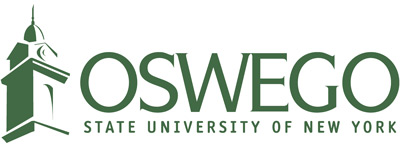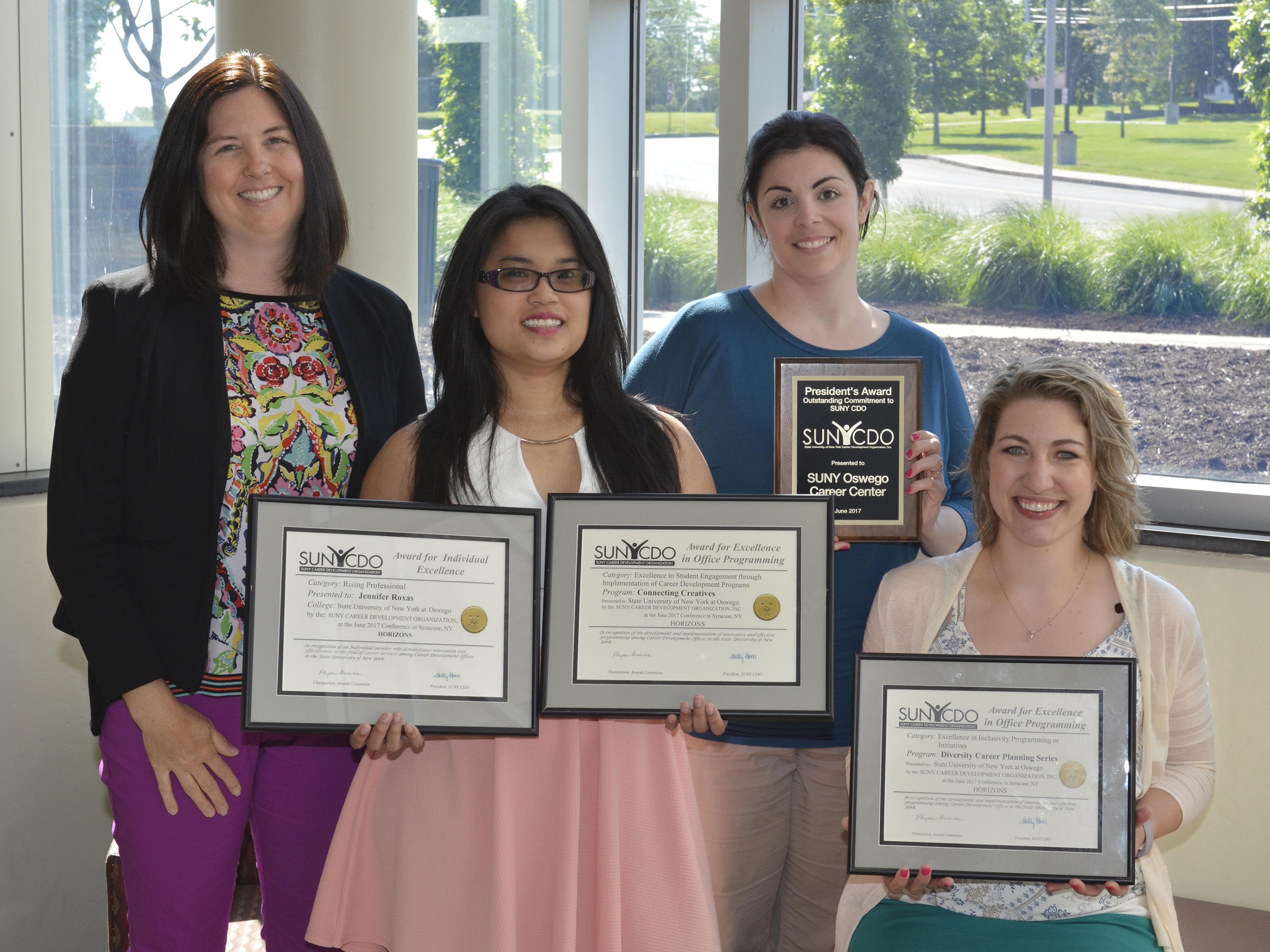Career coaches from the Office of Career Services showcase recent honors from the SUNY Career Development Conference: from left, Christy Huynh, Jenny Roxas, Jackie Wallace and Mallory Bower.
At the SUNY Career Development Conference June 14 to 16 in Syracuse, Oswego staff earned three of the five statewide awards. Jenny Roxas earned the Individual/Rising Professional Award, given to a professional with less than five years in the field demonstrating innovation and effectiveness in Career Services, and an Excellence in Student Engagement through Implementation of Career Development Programs Award, for her efforts around her particular industry of “Fine and Performing Arts, Media and Entertainment.” Roxas and Mallory Bower earned the Excellence in Inclusivity Programming or Initiatives Award for new programs or initiatives toward building diversity and inclusion to one or more student/alumni demographics, recognizing the series of diversity programs they planned and implemented throughout the year. In addition, Christy Huynh and Jackie Wallace earned Presidential Awards for Excellence for providing complete leadership for the conference. Read full story
The following SUNY Oswego employees recently completed Medical Countermeasures: Point of Dispensing (POD) Planning and Response training – a two-day program administered on campus by the National Emergency Response and Rescue Training Center in cooperation with the Department of Homeland Security and the Federal Emergency Management Agency (FEMA): Angie Brown, director of Mary Walker Health Center; Kathy Evans, assistant vice president for student development; Eric Foertch, director of environmental health and safety; Malcolm Huggins, assistant director of athletics; Richard Kolenda, assistant vice president for residence life and housing; Wayne Westervelt, chief communication officer; Starr Wheeler, coordinator, disability support services; University Police Chief John Rossi; Assistant Chief Kevin Velzy; and Lieutenants Matthew Barbeau and Evan Proulx. The course serves as a guide for local health officials and their partners to coordinate plans to provide mass distribution of medical countermeasures in response to a large-scale public health incident.
Psychology major Julianne Cary received a competitive Psi Chi 2016-17 Summer Undergraduate Research Grant. Her proposal, “The Relationship between Olfactory Perception and Positive, Negative, and Disorganized Behavior in the General Population,” fell in the top tier of applications overall, and only 55 perecent of applications were funded. Her mentor, Emily Bovier, who leads the college’s Sensory Behavior Lab, was also awarded a stipend for working with Cary. The study investigates whether individual differences in smelling capacity, an indicator of higher-level brain functioning, will predict positive, negative and disorganized symptom behavior in a subclinical population. The measures could serve as a tool to guide early intervention for individuals at higher risk for developing a disorder such as schizophrenia, and may provide insight to underlying neurological and sensory defects occurring simultaneously with these symptoms, according to the grant application.
Gary Morris, director of career services, was the keynote speaker at the Rochester Area Career Development Association conference in June. The organization, which includes 21 colleges in the region, asked Morris to inspire the association members to try new things such as the industry-centric model Oswego’s Office of Career Services developed with career coaches for dedicated program areas.
Mathematics professor Ampalavanar Nanthakumar was invited to present a paper on "A Comparison of Misclassification Error Rates" at the 11th annual International Conference in Statistics June 26 to 29 in Athens, Greece.
Computer science professor Damian Schofield presented a talk on applications of virtual technologies within IST/ACorner, a partnership between Técnico -- the largest school of architecture, engineering, science and technology in Portugal -- and the U.S. embassy in Lisbon. A story on Técnico’s website, which billed Schofield as “one of the most renowned researchers in the field,” said he discussed how criminal investigation, education, facial recognition and industrial evaluation are just some of the ways three-dimensional graphic technology has come to impact everyday life.




